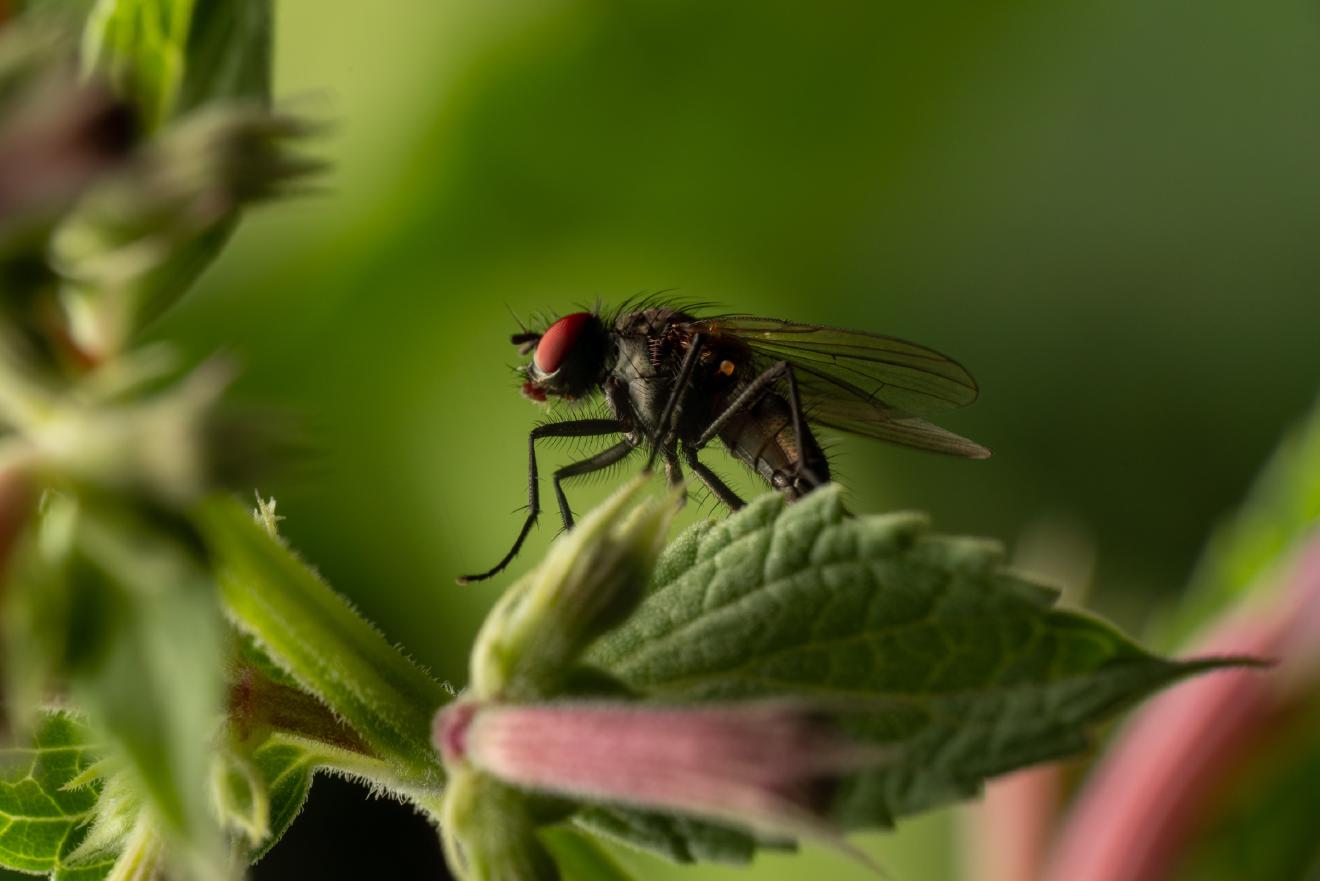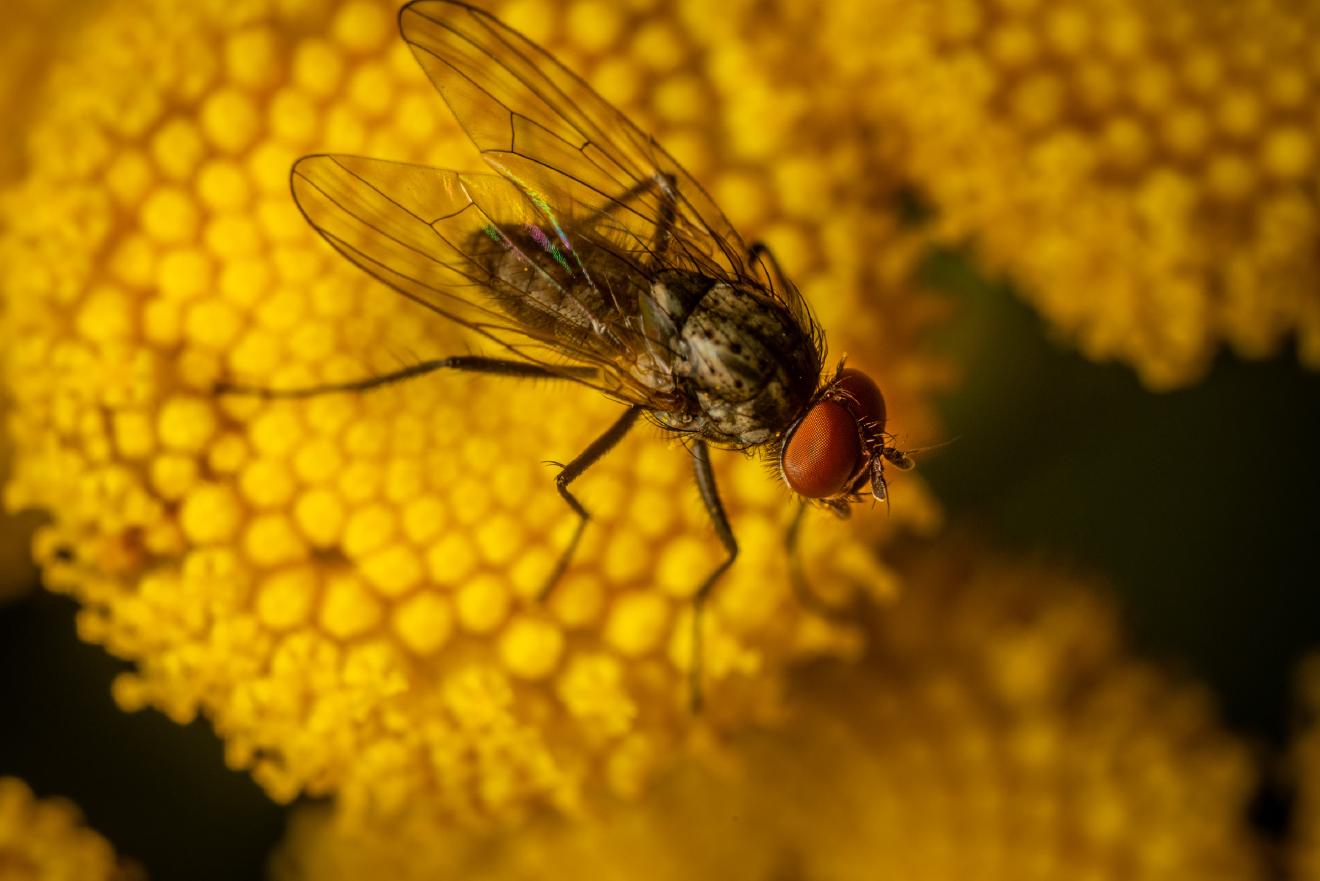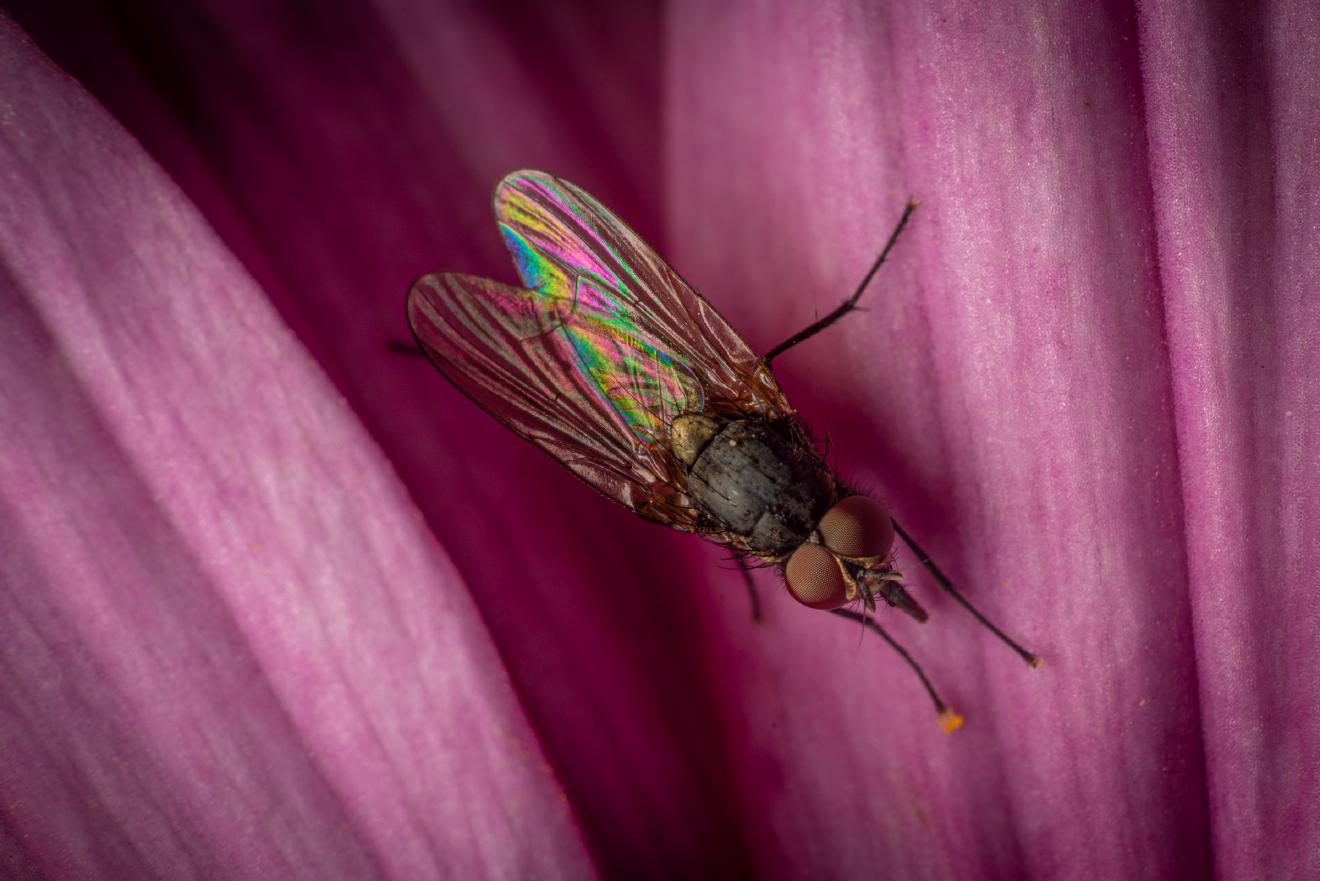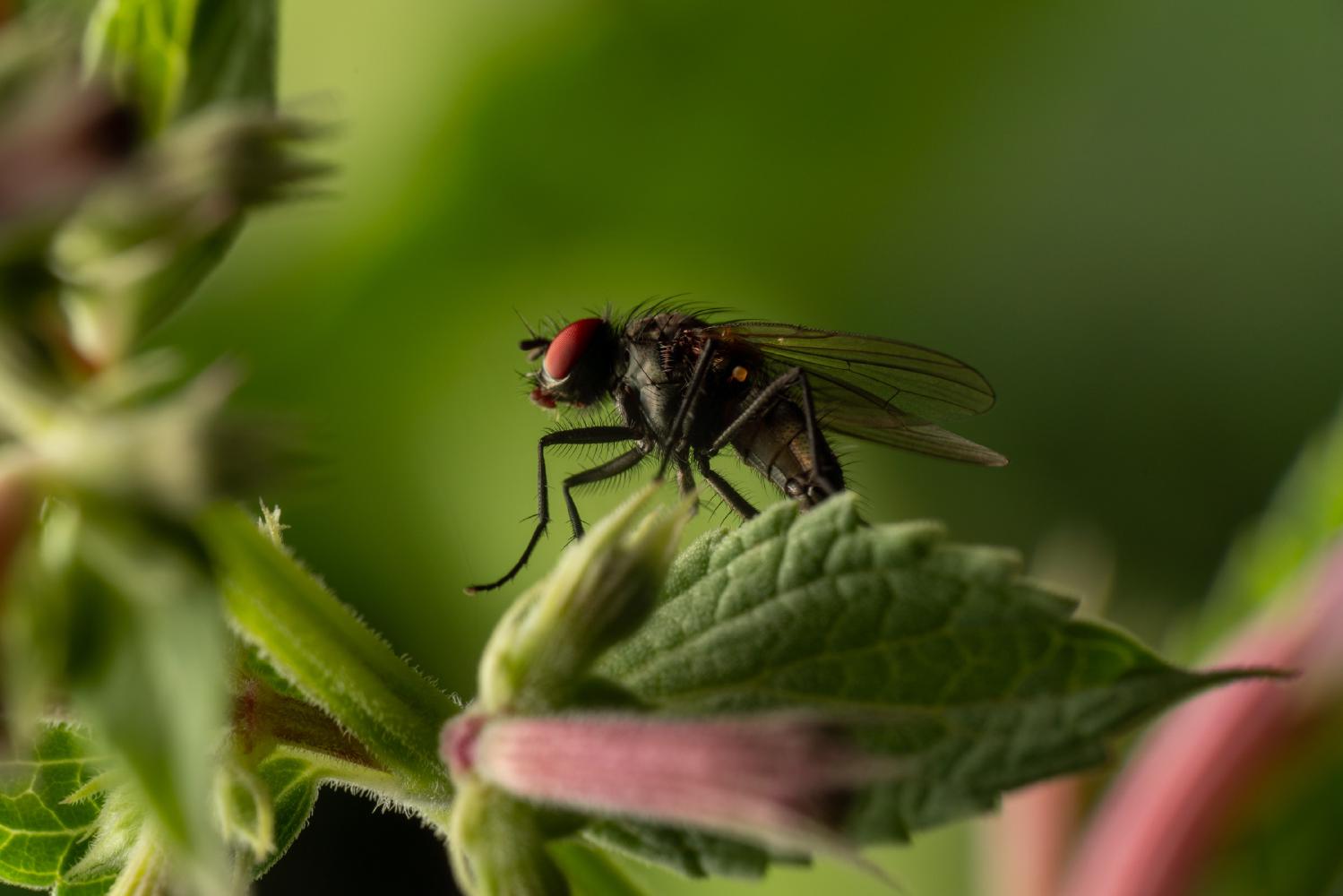Lesser House Fly
Lat. “Fannia canicularis“
species
of family
“Lesser House Flies and Allies“
1 species
Fannia canicularis, also known as the lesser housefly, is a small fly with a length of 4 to 6 mm. The males have white-bordered eyes that meet above, while the females’ eyes do not meet. The males have distinct black stripes on their brown-grey thorax, while the females have less distinct stripes. Females can lay up to 2,000 eggs in batches and the eggs hatch after two days. The larvae take about 2-4 weeks to develop into adults. The lesser housefly is found worldwide and can be a carrier of diseases. It is often found on excrement and vertebrate animals.
Morphology
Fannia canicularis is a slim fly reaching a length of from 4 to 6 mm. The white-bordered eyes meet above in the male, a condition described as holoptic. In females, the eyes do not meet. The brown-grey thorax has three black, longitudinal stripes in the males. These are much less distinct in the female. The first two segments of the abdomen are translucently yellow with a dark-brown basal colour. The dark trapezoid marks of the males are hardly recognizable in the females. The halteres are yellowish.
Development
The females lay their eggs in batches of up to 50 and may lay up to 2,000 eggs altogether. The eggs, which are white with a pair of dorsal longitudinal flanges or wings, can float in liquid and semiliquid decaying organic matter, especially poultry, cow and dog feces, kitchen waste such as the end of putrid potatoes or carrots, silage and compost, cheese, bacon, and drying fish. They are commonly found in garbage depots, wheelie bins, garbage trucks, and other places where food waste is stored. The eggs hatch after only two days (24 to 48 hours at 24–27 °C or 75–81 °F) and the larvae require six or more days to reach pupation, which lasts seven or more days, so they usually take about 2–4 wk to develop into adults, depending upon temperature. The cycle repeats in very damp, putrid excrement, liquid manure, etc.
Behaviour
Fannia canicularis is spread worldwide. They have a life expectancy of two to three weeks. In Central Europe, about seven generations can develop per year. They are often found on excrement and on vertebrate animals. Because of their oscillating between excrement and human food, they are considered possible disease carriers. From May to October, the lesser housefly comes frequently into buildings and is noticeable by its peculiar, silent flight in the room center, where it circles down-hanging articles, particularly lamps. It changes the flight direction jerkily. This is a patrol flight, in which the males supervise, if necessary, their district and attack intruders. During short breaks and in the night hours, the flies sit on lamps or on walls and leave their small excrement marks. In the wild, tree branches serve the flies for their swarm dances.
References
Steve, Peter C. (1960), “Biology and Control of the Little House Fly, Fannia canicularis, in Massachusetts”, Journal of Economic Entomology, 53 (6): 999–1004. Zeil, Jochen (1986), “The territorial flight of male houseflies (Fannia canicularis L.)”, Behavioral Ecology and Sociobiology, 19 (3): 213–219, doi:10.1007/BF00300862.



Ancestry Graph
Further Information
Copyright

This article uses material from the Wikipedia article Fannia canicularis the free encyclopedia Wikipedia which is released under Creative Commons Attribution-ShareAlike 4.0 International License). On Wikipedia a list of authors is available.
